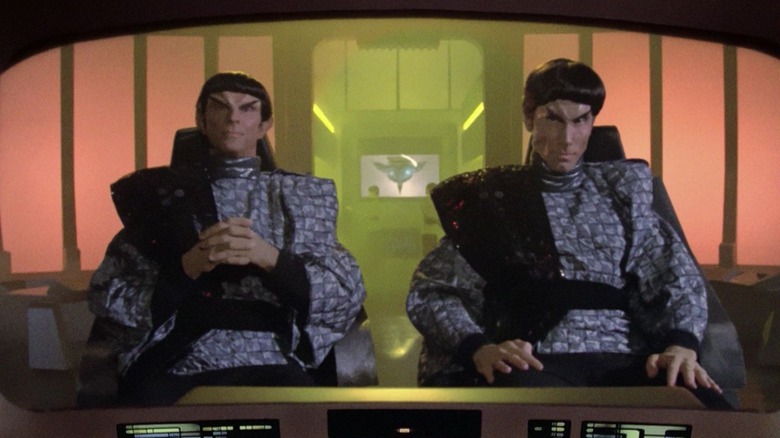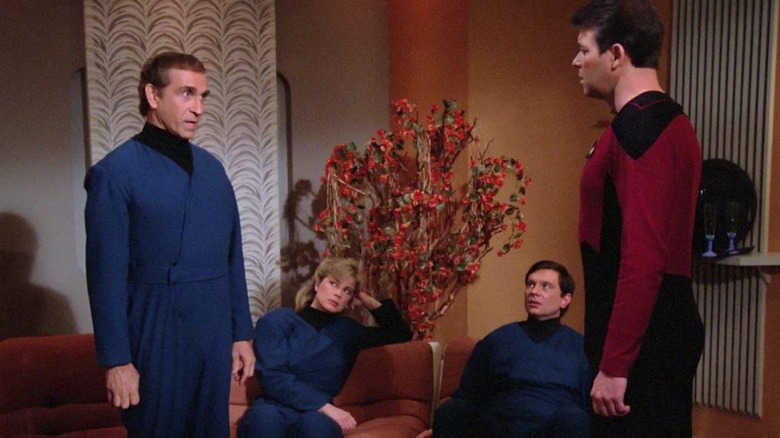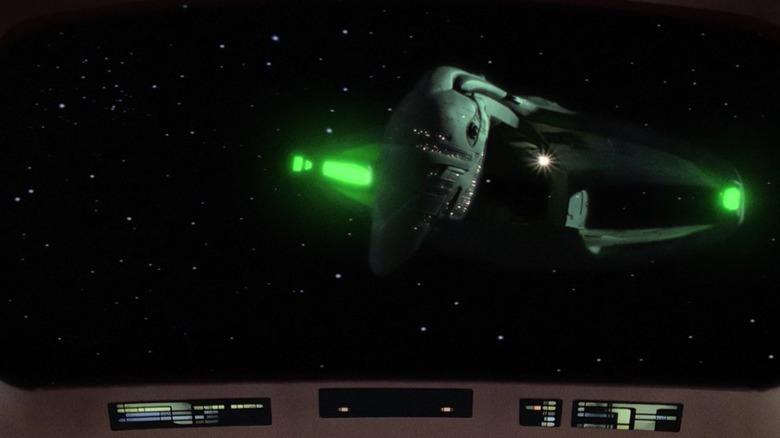A Writers' Strike Nearly Sunk Star Trek: TNG's The Neutral Zone Episode
In the "Star Trek: The Next Generation" episode "The Neutral Zone" (May 16, 1988), the U.S.S. Enterprise-D encounters a seemingly abandoned cryo-pod floating out in the galaxy. On board are three humans, frozen since the 20th century. When they are thawed, Captain Picard (Patrick Stewart) takes a Roddenberrian opportunity to lecture them, explaining that their outmoded ideas about capitalism and selfishness are dead in the 24th century. Picard's dialogue is partly utopian but mostly condescending, meant more for TV viewers in 1988 than directed toward his scene partners.
The episode's B-plot involved a visit to the titular Neutral Zone between Federation space and the Romulan Star Empire. There, the Enterprise investigates the destruction of a remote outpost, perhaps the result of Romulan malfeasance. "The Neutral Zone" was the first time Trekkies had seen Romulans since the original series, re-establishing them as a major threat in the galaxy. It also set up the Romulans as more secretive and dastardly than audiences had seen before. The writing isn't great, but "The Neutral Zone" established some key elements of "Star Trek" lore.
There's a reason the writing wasn't great. It seems that the makers of the episode only had days to finish their script before a writers' strike was scheduled to begin, and they just had to go with what they had rather than take the time to smooth out dialogue and make the story stronger. The teleplay for "The Neutral Zone" was credited to Maurice Hurley, and it was a rushed first draft that he banged out in a day and a half (basing his idea on a pitch by freelancers Deborah McIntyre and Mona Clee).
The making of "The Neutral Zone" is related in the book "Star Trek: The Next Generation 365" by Paula Block and Terry J. Erdmann.
The writers' strike of 1988
In 1988, the WGA was striking because producers had used some snaky legalese to bilk them out of royalties. Writers wanted a raise in their residuals, despite producers' claims that TV shows did poorly in syndication and that writers should be paid in decreasing percentages. The writers also demand more creative control over certain projects, including casting and selection of directors. The previous WGA agreement was set to expire on February 29, 1988, and no new deal had been negotiated. By March 7, the strike was in full swing. It would last all the way until August 7 — 153 days — making it the longest strike in WGA history. As those who recall the 2023 WGA strike can see, the AMPTP has always been in the game of stiffing writers.
According to Block's and Erdmann's book, "Star Trek: The Next Generation" hadn't stocked up several scripts in preparation for the strike. Other shows at the time were careful to stock up a library, prepping for an indefinite period when writers wouldn't be able to offer alterations or new stories. "Next Generation" was so rushed in its early days that it didn't have time to similarly prepare. Indeed, the first season of the show was notoriously rocky, with many scripts being written and re-written in private by authors who were trying to exert control over the series. Gene Roddenberry's lawyer, the widely loathed Leonard Maizlish, infamously swiped completed scripts from Roddenberry's office and altered them for unknown reasons.
Additionally, Hurley was famously difficult to get along with; he was the producer who hated actor Gates McFadden and had her character, Dr. Beverly Crusher, removed from the show's second season. When Hurley was fired, McFadden returned.
And it shows
The rushed writing on "The Neutral Zone" really shows. "Star Trek: The Next Generation 365" pointed to a notoriously odd exchange between Worf (Michael Dorn) and Commander Riker (Jonathan Frakes), wherein they encounter a piece of space debris that might have come from Earth. Riker, in a bizarre contradiction of his character, suggests just leaving it behind. Finding a piece of space debris, a Trekkie would argue, is exactly the kind of mystery that the Enterprise would be enthused about solving.
The two stories also don't intersect very well. The A-plot about 20th-century humans trying to form lives in the 24th century was intriguing enough without the investigation of a possible Romulan attack. Also, as noted above, the moralizing committed by the Enterprise crew toward their unfrozen friends is ham-fisted in the worst possible way. One might expect that kind of mawkish writing from a first draft.
It seems that the original plan for "The Neutral Zone" was far more ambitious. In Harry Nemeck's "The Star Trek: The Next Generation Companion," it was revealed that "The Neutral Zone" was initially conceived as a two-part episode that would have ended on a cliffhanger wherein the Enterprise and the Romulans have to team up to fight a common enemy. That enemy was going to be the Borg, the malevolent cyborgs that would ultimately be introduced in the season 2 episode "Q Who" (May 8, 1989). That would have been quite an epic two-parter. However, since "Next Generation" was so poorly organized (and because the writers' strike took effect), that story was abandoned.
Many Trekkies agree that "Next Generation" didn't hit its stride until its third season.


